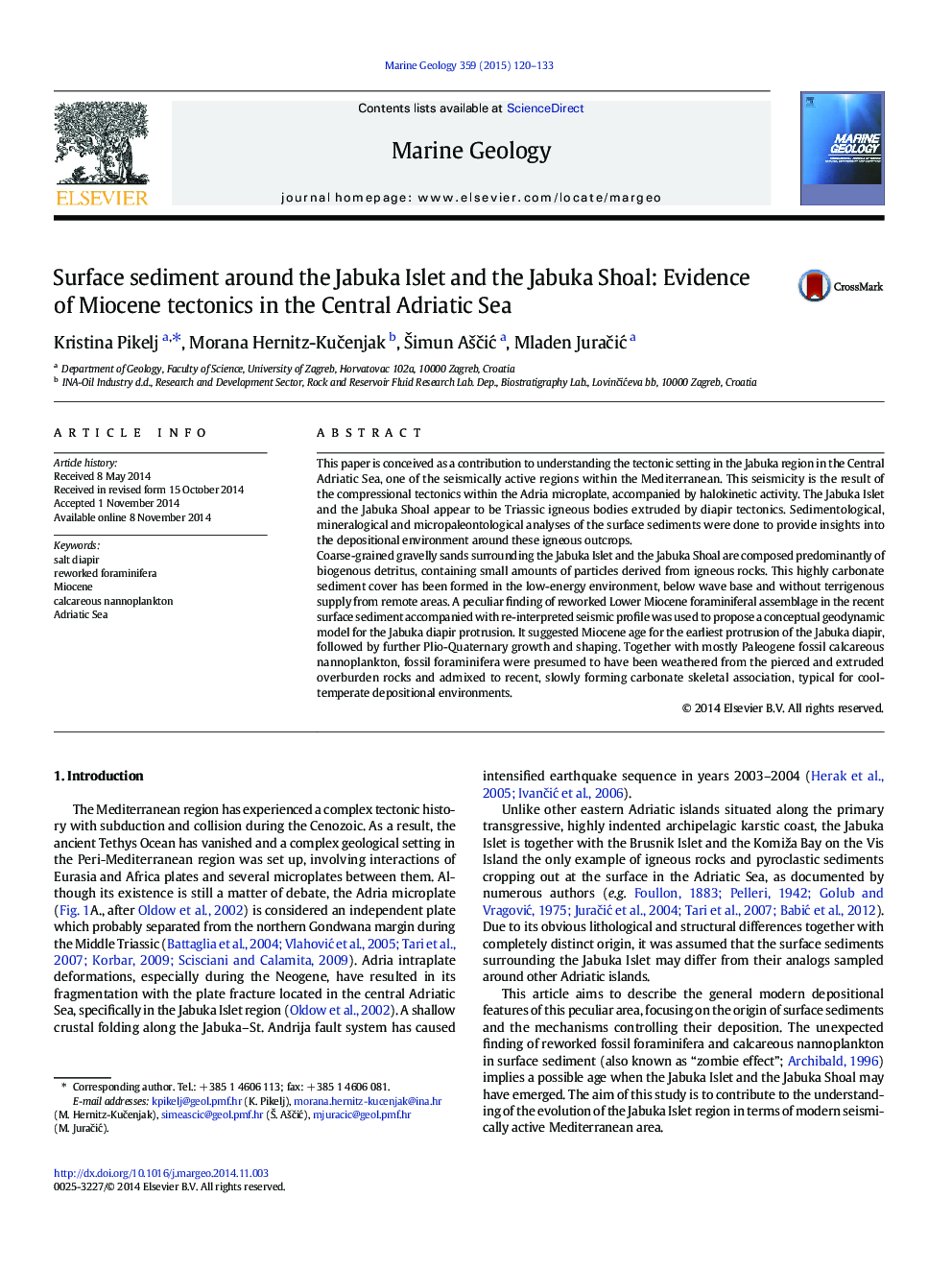| کد مقاله | کد نشریه | سال انتشار | مقاله انگلیسی | نسخه تمام متن |
|---|---|---|---|---|
| 4718227 | 1639093 | 2015 | 14 صفحه PDF | دانلود رایگان |

• Coarse carbonate sediment is deposited around the magmatic Jabuka Islet and the Jabuka Shoal.
• Fossil foraminifera suggested Miocene age for the earliest protrusion of the Jabuka diapir.
• A geodynamic model of Jabuka diapir protrusion is proposed.
This paper is conceived as a contribution to understanding the tectonic setting in the Jabuka region in the Central Adriatic Sea, one of the seismically active regions within the Mediterranean. This seismicity is the result of the compressional tectonics within the Adria microplate, accompanied by halokinetic activity. The Jabuka Islet and the Jabuka Shoal appear to be Triassic igneous bodies extruded by diapir tectonics. Sedimentological, mineralogical and micropaleontological analyses of the surface sediments were done to provide insights into the depositional environment around these igneous outcrops.Coarse-grained gravelly sands surrounding the Jabuka Islet and the Jabuka Shoal are composed predominantly of biogenous detritus, containing small amounts of particles derived from igneous rocks. This highly carbonate sediment cover has been formed in the low-energy environment, below wave base and without terrigenous supply from remote areas. A peculiar finding of reworked Lower Miocene foraminiferal assemblage in the recent surface sediment accompanied with re-interpreted seismic profile was used to propose a conceptual geodynamic model for the Jabuka diapir protrusion. It suggested Miocene age for the earliest protrusion of the Jabuka diapir, followed by further Plio-Quaternary growth and shaping. Together with mostly Paleogene fossil calcareous nannoplankton, fossil foraminifera were presumed to have been weathered from the pierced and extruded overburden rocks and admixed to recent, slowly forming carbonate skeletal association, typical for cool-temperate depositional environments.
Journal: Marine Geology - Volume 359, 1 January 2015, Pages 120–133